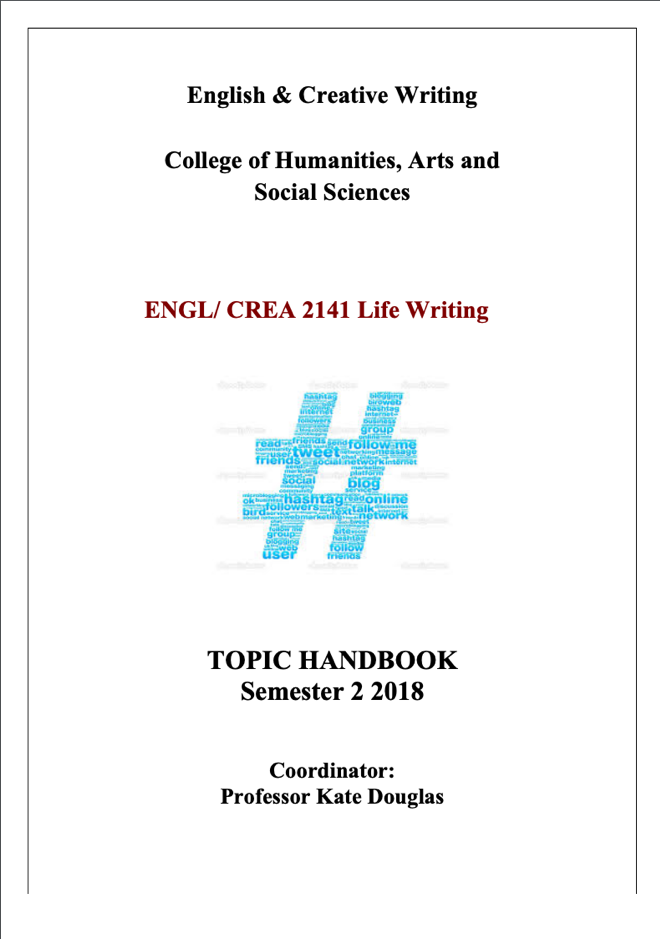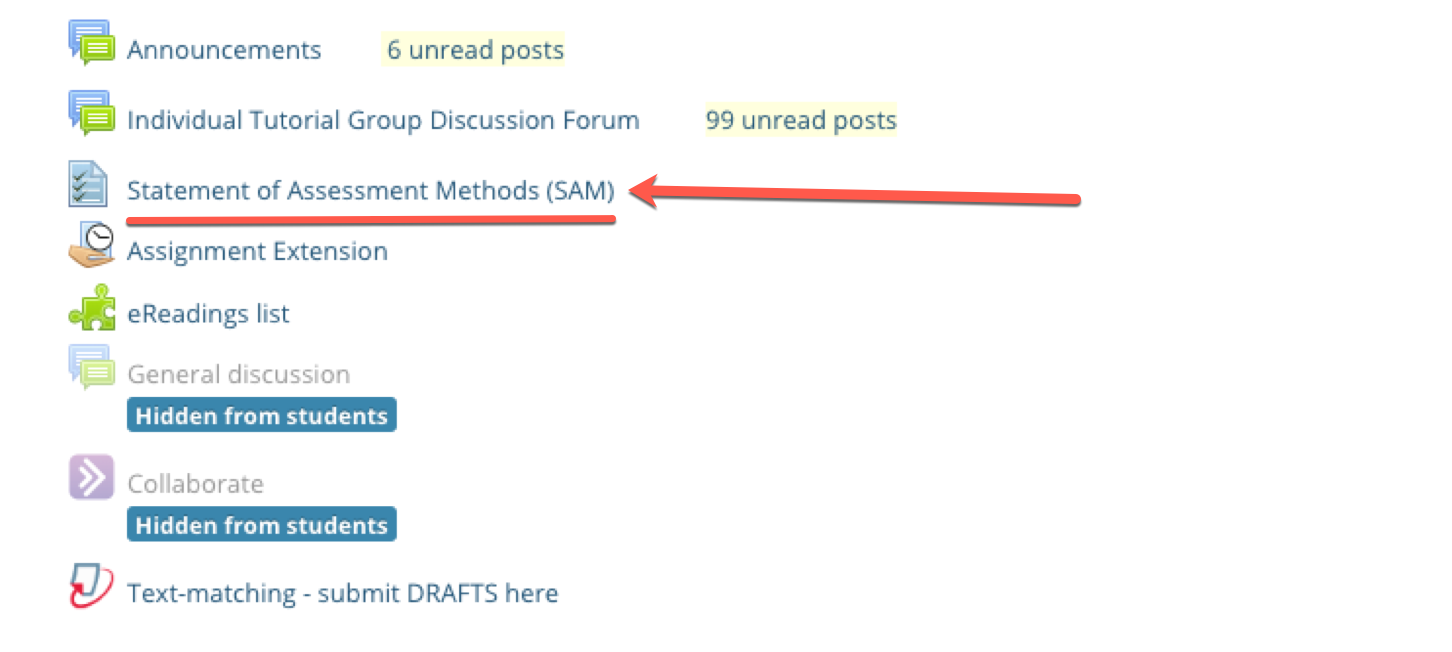
The Topic Handbook
 Your Topic Handbook will detail all of the most important information that you need to successfully complete the topic, and it should be your first port of call should you have any questions about topic formalities such as assignment due dates, the timetable, or contact information.
Your Topic Handbook will detail all of the most important information that you need to successfully complete the topic, and it should be your first port of call should you have any questions about topic formalities such as assignment due dates, the timetable, or contact information.
Most Handbooks start with an introduction outlining the topic’s learning aims and outcomes. Pay attention here, as many students skim this part, but it can reveal some important clues about what your tutors will be looking for in your assessment. It should also list the topic coordinators and tutors with their preferred contact methods – some may be available through email only, some may have consultation times – and it should list the class times and locations.
Topic Expectations
The Handbook should also outline the topic coordinators expectations of you throughout the semester. This may include information about attendance and participation. This is important. Don’t assume that all topics only have mandatory attendance at tutorials and you can watch the lectures at home. This isn’t necessarily the case!
Some topics will also grade participation, which means not just showing up at tutorials, but taking part in discussions, small group activities, and being active in online FLO discussions. This section should outline what type of activity constitutes participation, how you should prepare for each class, and how you will demonstrate the topic’s learning outcomes through your engagement and assessment. This section may also include information about how to apply for extensions.

There may also be a semester breakdown. This information should correlate to the weekly breakdown on FLO. Often, these timetables make it clear which concepts will be covered each week, and what the associated readings may be. It will also highlight if there are any weeks without lectures or tutorials. Write these down in your diary and planner so you don’t show up to an empty room!
Somewhere in the Topic Handbook, it should also outline which referencing system is expected of you, and what kinds of formatting you are expected to adhere to. If it doesn’t explicitly mention formatting, assume that it is the standard, which is 12-point font, Times New Roman or a simple sans serif font such as Calibri, and double line spacing.
Assessment
Next, have a look to see the assessment of the semester. How many assignments are there, what kinds are they – essays, tests, in class discussion, exams – and when are they due? Write these dates in your diary or planner. Also pay attention to how much each assessment is weighted. If an assignment is worth 10% of your grade, it won’t require as much time as an assignment worth 40%, so pay attention to this when you are planning how long you will need to devote to each. This should also tell you how much your attendance and participation are worth. If you show up and engage every week, that’s an easy grade!

While there might be an overall table of assessment, you should also get a breakdown of each individual assessment, including information about the assignment’s expectations and guidelines, the rubric and due dates. You don’t need to freak yourself out by reading these in depth in the first instance – save that for about three or four weeks before they are due – but do have a look at the assessment types and the what they require of you. You may also pick up on important key words and concepts in this first reading. For example, there may be an essay question addressing a particular theme in a novel. If you know this before you read the novel, you know what to look for and make notations about as you read. It can also flag any key ideas that come up in lectures or tutorials, and give you a chance to clarify any questions you may have before it gets to the critical period right before the assignment is due.
Rubrics
Now, as I said, don’t panic about this part of the Topic Handbook just yet. I’ll have lots of blogs to help you with this part of it. Just as a final point though, I want to draw your attention to the rubrics of your assessment. The rubric details how each assignment will be assessed, and its important to keep this document with you as you research, plan, write and edit your assignments. Seriously!
SAM
The last item on my list today, is the SAM, or Statement of Assessment Methods. This is an official document and details in very formal terms how you will be assessed according to the topic outcomes, and the criteria for the successful completion of the topic. This includes scaling, penalties for late submission, resubmissions, supplementary assessment, and details about breaches of academic integrity. If there is a disparity between the SAM and your Topic Handbook, it’s important to flag this.

If you missed part 1: Navigating FLO, check it out here!
How have you gone navigating FLO and your Topic Handbook? Let us know in the comments what troubles you’ve had, or any solutions to overcoming issues that you think might be useful to other students! Or, just share your thoughts and grievances!
And last of all, don’t forget to subscribe!

